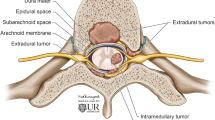Abstract
Introduction
Sturge-Weber syndrome (SWS) is a sporadic phakomatosis with variable intracranial involvement. Port-wine stain, choroidal angioma, and leptomeningeal angiomatosis typify the full disease spectrum. Disease manifestations generally evolve toward cerebral hemiatrophy and compensatory hemicalvarial enlargement. However, recognizable imaging correlates may be lacking early on. We have observed SWS-related marrow signal changes to be prevalent in patients of all ages. The purpose of this study is to evaluate bone marrow abnormalities in patients with Sturge-Weber syndrome.
Methods
The MR imaging database at an academic children’s hospital was queried for “Sturge-Weber” to build a cohort for retrospective analysis. Two board-certified neuroradiologists reviewed MR exams for abnormalities of the bone marrow, globes, susceptibility, and perfusion. A two-tailed Fisher’s exact test was applied to evaluate the association between variables.
Results
Twenty brain MR exams from 19 SWS patients, mean age 4.8 +/− 5.8 years (range 6 months–16 years), met the inclusion criteria. All patients with port-wine stains (18/20) had leptomeningeal enhancement, marrow T2 prolongation, and/or marrow enhancement ipsilaterally. Leptomeningeal enhancement was only present in 53 %. Eighty percent had unilateral bone marrow abnormalities. In 37 % (all <5 years), marrow abnormalities occurred without leptomeningeal angiomatosis. Thirty-five percent had facial bones involvement; 75 % of these had ipsilateral choroidal angiomas.
Conclusion
Bone marrow signal abnormality and enhancement is common ipsilateral to the nevus flammeus in SWS. As this may be the sole brain MR abnormality in some patients, it may reflect mild phenotypes or an early disease manifestation, and could help stratify patients for early intervention.



Similar content being viewed by others
Abbreviations
- SWS:
-
Sturge-Weber syndrome
- PWS:
-
Port-wine stain
References
Lina DDM, Barkera PB, Krauta MA, Comib A (2013) Early characteristics of Sturge-Weber syndrome shown by perfusion MR imaging and proton MR spectroscopic imaging. AJNR Am J Neuroradiol 24:1912–1915
Shirley MD, Tang H, Gallione CJ, Baugher JD, Frelin LP, Cohen B, North PE, Marchuk DA, Comi AM, Pevsner J (2013) Sturge-Weber syndrome and port-wine stains caused by somatic mutation in CGAQ. N Engl J Med 368:1971–1979
Parsa C (2013) Focal venous hypertension as a pathophysiologic mechanism for tissue hypertrophy, port-wine stains, the Sturge-Weber syndrome, and related disorders: proof of concept with novel hypothesis for underlying etiological cause (An American ophthalmological society thesis). Trans Am Ophthalmol Soc 111:180–215
Green AK, Taber SF, Ball KL, Padwa BL, Mulliken JB (2009) Sturge-Weber syndrome: soft-tissue and skeletal overgrowth. J Craniofac Surg 20(5):1629–1630
Huang JS, Chen CC, Wu YM et al (1997) Periodontal manifestations and treatment of Sturge-Weber syndrome: report of two cases. Kaohsiung J Med Sci 13:127–135
Ukna RA, Cassingham RJ, Carr RF (1979) Peridontal manifestations and treatment in a case of Sturge-Weber syndrome. Oral Surg Oral Med Oral Pathol 47:408–415
Comi AM (2003) Pathophysiology of Sturge-Weber syndrome. J Child Neurol 18:509–516
Ch’ng S, Tan ST (2008) Facial port-wine stains—clinical stratification and risks of neuro-ocular involvement. J Plast Reconstr Aesthet Surg 61(8):889–893
Ville D, Enjolras O, Chiron C, Dulac O (2002) Prophylactic antiepileptic treatment in Sturge-Weber disease. Seizure 11(3):145–150
Mundkur N (2005) Neuroplasticity in children. Indian J Pediatr 72(10):855–857
Roach ES (1992) Neurocutaneous syndromes. Pediatr Clin North Am 39:591–620
Lin DD, Gailloud P, McCarthy EF, Comi AM (2006) Oromaxillofacial osseous abnormality in Sturge-Weber syndrome: case report and review of the literature. AJNR Am J Neuroradiol 27(2):274–277
Boyd JB, Mulliken JB, Kaban LB et al (1984) Skeletal changes associated with vascular malformations. Plast Reconstr Surg 74:789–797
Sujansky E, Conradi S (1995) Outcome of Sturge-Weber syndrome in 52 adults. Am J Med Genet 57:35–45
Enroljas O, Riche MC, Merland JJ (1985) Facial port wine stains and Sturge-Weber syndrome. Pediatrics 76:48–51
Hu J, Yu Y, Juhasz C, Kou Z, Xuan Y, Latif Z, Kud K, Chugan HT, Haacke EM (2008) MR susceptibility weighted imaging (SWI) complements conventional contrast enhanced T1 weighted MRI in characterizing brain abnormalities of Sturge-Weber syndrome. J Magn Reson Imaging 28(2):300–307
Miao Y, Juhasz C, Wu J, Tarabishy B, Lang Z, Behen MW, Zou Z, Ye Y, Chugani HT, Hu J (2011) Clinical correlates of white matter blood flow perfusion changes in Sturge-Weber syndrome: a dynamic MR perfusion-weighted imaging study. AJNR Am J Neuroradiol 32(7):1280–1285
Griffiths PD, Coley SC, Romanowski CAJ, Hodgson T, Wilkinson ID (2003) Contrast-enhanced fluid-attenuated inversion recovery imaging for leptomeningeal disease in children. AJNR Am J Neuroradiol 24:719–723
Ethical standards and patient consent
We declare that this manuscript does not contain clinical studies or patient data.
Conflict of interest
We declare that we have no conflict of interest.
Author information
Authors and Affiliations
Corresponding author
Additional information
Matthew T. Whitehead and Gilbert Vezina contributed equally to this work.
Rights and permissions
About this article
Cite this article
Whitehead, M.T., Vezina, G. Osseous intramedullary signal alteration and enhancement in Sturge-Weber syndrome: an early diagnostic clue. Neuroradiology 57, 395–400 (2015). https://doi.org/10.1007/s00234-015-1488-6
Received:
Accepted:
Published:
Issue Date:
DOI: https://doi.org/10.1007/s00234-015-1488-6




